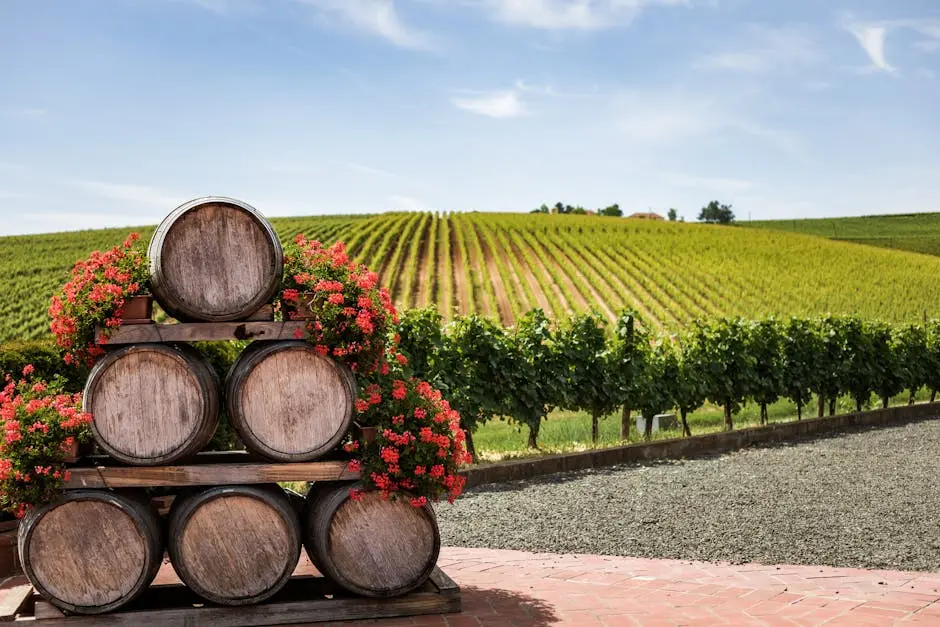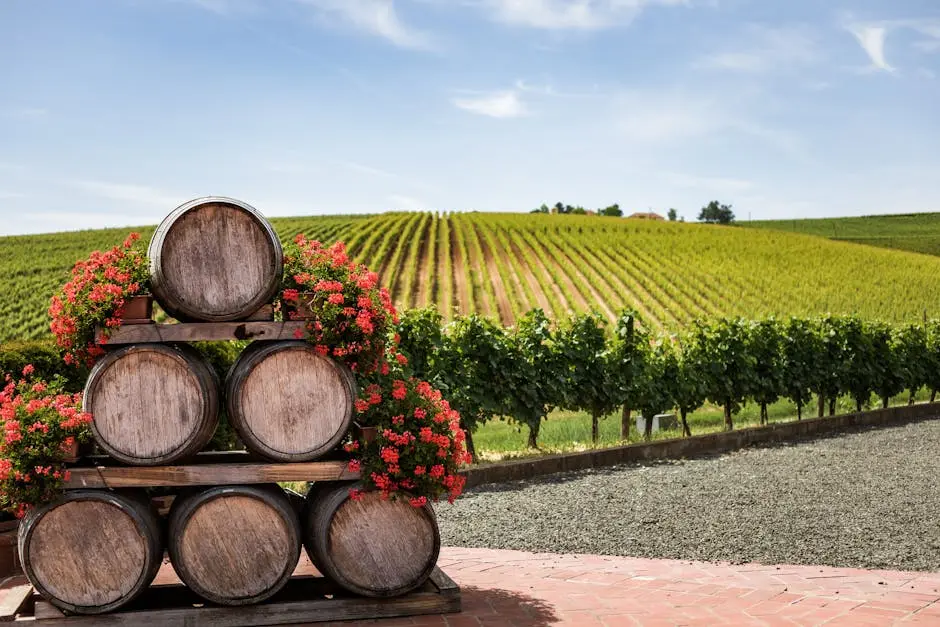Wine is more than just a beverage; it’s an experience to be savored. As wine lovers grow increasingly conscious of environmental impact, wineries around the world are adopting sustainable practices that protect our planet. Let’s explore some of these innovative methods.
1. Organic Grapes for Pure Perfection
Organic farming in vineyards means no synthetic pesticides or fertilizers. This not only results in healthier soil and biodiversity but also brings out the truest flavors in the wine.
An increasing number of vineyards are turning to organic farming as a way to protect the environment and enhance their product quality. By using natural pest control methods and composting vines, they maintain a lush, fertile vineyard without harmful chemicals. This not only preserves the local ecosystem but elevates the essence and aroma of the wine you savor.
2. Biodynamic Approaches for Balanced Ecosystems
Biodynamic farming views the vineyard as a self-sustainable ecosystem. By aligning agricultural activities with natural cycles, this method fosters harmony between the land and the cosmos.
The biodynamic approach goes a step beyond organic by incorporating holistic, ethical, and spiritual considerations. This method encourages farmers to plant, prune, and harvest according to lunar phases, seeking to create a microcosm where soil vitality and plant health are in sync with cosmic forces. The result is a vineyard humming with life and producing wines resonating with the vibrancy of their origins.
3. Natural Winemaking Processes
Natural winemaking minimizes human intervention, focusing on native yeasts for fermentation and minimal or no additives. The outcome is a wine that truly embodies its origin.
Winemakers who embrace natural processes are dedicated to letting the grapes and their environment dictate the direction of the wine. By avoiding industrial additives and relying on the natural fermentation process, the wine takes on unique characteristics that mirror the soil and climate in which the grapes were grown. This practice is not only intriguing for the palate but also exemplifies a respect for traditional winemaking techniques.
4. Water Conservation Efforts
With the wine industry being a heavy water user, conservation techniques such as drip irrigation and rainwater harvesting are critical to reducing the water footprint.
Innovative water-saving technologies are making waves in the wine industry, allowing wineries to significantly cut back on their water usage. Implementing systems that collect and recycle wastewater for vineyard irrigation are not only practical but essential in drought-prone areas. These methods ensure that every drop of water is used efficiently, helping to maintain the delicate balance of our planet’s resources.
By washing and reusing processing equipment more strategically, wineries can also lessen their overall water consumption. Reducing water waste is imperative not only for the environment but for the future viability of the wine industry, which heavily depends on this precious resource.
5. Using Renewable Energy Sources
Many wineries are transitioning to solar and wind energy to power their operations. This shift not only cuts down on carbon emissions but also ensures a cleaner atmosphere for grape growing.
Adopting renewable energy not only aligns the wine industry with environmental goals but also offers financial benefits. By installing solar panels or wind turbines, wineries can become self-sufficient, dramatically reducing their reliance on traditional power grids. This autonomy safeguards against energy price fluctuations, providing a stable operational climate for producing high-quality wines.
6. Sustainable Packaging Innovations
From lightweight glass bottles to biodegradable corks and labels, sustainable packaging reduces waste and the carbon footprint associated with wine production.
Innovations in packaging are revolutionizing the wine industry, benefiting both the planet and consumers. Many companies are experimenting with eco-friendly materials that break down naturally, minimizing landfill impact. Meanwhile, some are opting for reusable containers that promote a circular economy, where the bottle returns to the manufacturer for cleaning and refilling. These efforts mark a significant step towards an environmentally responsible future without compromising the wine experience.
7. Promoting Biodiversity
By cultivating a variety of plants and fostering wildlife habitats around vineyards, wineries promote a biodiverse environment that enhances soil health and resilience.
Encouraging biodiversity is pivotal for sustaining healthy ecosystems. Diverse plant species around vineyards act as natural pest deterrents and assist in maintaining soil integrity. Furthermore, these biodiversity projects often create habitats for local wildlife, supporting broader ecological networks. This respect for plant and animal life fosters a more balanced and robust vineyard, capable of producing wine that speaks volumes of its sustainable roots.
8. Fair Trade and Community Support
Fair trade practices ensure that vineyard workers are paid fairly and work in safe conditions, promoting social sustainability alongside ecological efforts.
Social responsibility in the wine industry extends beyond environmental concerns to encompass ethical labor practices. Supporting fair trade initiatives means that wineries take an active role in uplifting vineyard communities, encouraging education and development in rural areas. This fosters not only a loyal workforce but also contributes to a healthier, more equitable industry. As consumers become increasingly aware of their purchasing power, they’re opting for wines that reflect their values, prioritizing labels that embody fairness and community support.



